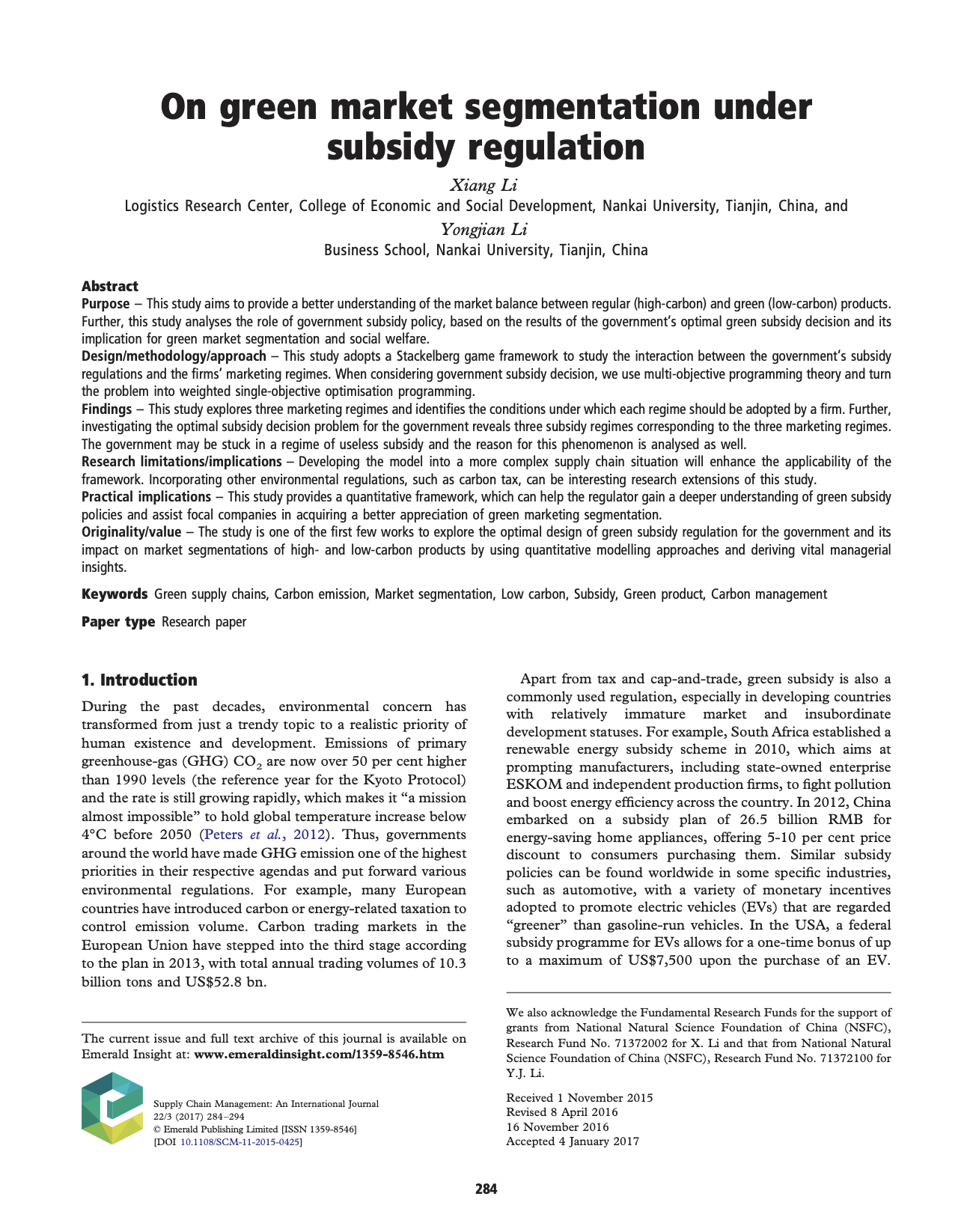By:Li Xiang, Li Yongjian. On Green Market Segmentation under Subsidy Regulation. Supply Chain Management: An International Journal, 22(3), 284-294, 2017.
ABSTRACT
Purpose - This study aims to provide a better understanding of the market balance between regular (high-carbon) and green (low-carbon) products. Further, this study analyses the role of government subsidy policy, based on the results of the government's optimal green subsidy decision and its implication for green market segmentation and social welfare.
Design/methodology/approach - This study adopts a Stackelberg game framework to study the interaction between the government's subsidy regulations and the firms' marketing regimes. When considering government subsidy decision, we use multi-objective programming theory and turn the problem into weighted single-objective optimisation programming.
Findings - This study explores three marketing regimes and identifies the conditions under which each regime should be adopted by a firm. Further, investigating the optimal subsidy decision problem for the government reveals three subsidy regimes corresponding to the three marketing regimes. The government may be stuck in a regime of useless subsidy and the reason for this phenomenon is analysed as well.
Research limitations/implications - Developing the model into a more complex supply chain situation will enhance the applicability of the framework. Incorporating other environmental regulations, such as carbon tax, can be interesting research extensions of this study. Practical implications - This study provides a quantitative framework, which can help the regulator gain a deeper understanding of green subsidy policies and assist focal companies in acquiring a better appreciation of green marketing segmentation.
Originality/value - The study is one of the first few works to explore the optimal design of green subsidy regulation for the government and its impact on market segmentations of high- and low-carbon products by using quantitative modelling approaches and deriving vital managerial insights.

